SEPTEMBER BIRTHSTONE-SAPPHIRE
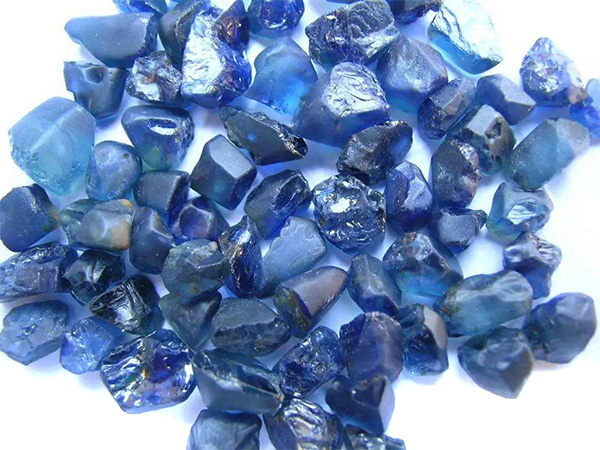
Sapphire has been found in Thailand, Sri Lanka, Madagascar, Laos, Cambodia, Changle, Shandong, Hainan, and the stalagmite mountains of Jiangjin, Chongqing. The rarest of them should belong to the sapphire in Kashmir, and Myanmar is the most common sapphire produced today. local.
The biggest feature of sapphire is that the color is uneven, and the flat ribbons and growth lines with different depths can be seen in parallel hexagonal cylinders. Polycrystalline twin crystal development, common blinds double crystal grain. The cracking is split along the double crystal plane. In addition to the above common features, sapphire in different regions of the world has its own characteristics. In the 1980s, many sapphire deposits were discovered in basalts along the eastern coast of China.
Introduction
The English name for sapphire is Sapphire, which is derived from the Latin Sphins, meaning blue. It belongs to the corundum family and the trigonal system. In the gem world, all kinds of gem-quality corundum other than rubies are called sapphire. The mineral name of sapphire is corundum, which is a corundum mineral. In fact, in the natural world, the gem-quality corundum except the red called ruby, the other colors such as blue, light blue, green, yellow, gray, colorless, etc., are called sapphire, or called sapphire, that is, The sapphire is preceded by a color name such as pink sapphire. The chemical composition of sapphire (Al2O3) is mainly Fe, Ti, and coloration. Corundum contains blue, azure, light blue and other trace elements due to the inclusion of trace elements such as iron (Fe) and titanium (Ti).
Among them, royal blue and cornflower color are considered to be thick and not black. When the arc-shaped cutting is enriched with three sets of inclusions parallel to the bottom surface and oriented, it can be called "Starlight Sapphire" when it produces beautiful six-shot starlight.
The composition of sapphire is alumina, which is blue due to the trace element titanium (Ti4+) or iron (Fe2+). It is a trigonal system, and its crystal form is often cylindrical, short column, plate, etc. The geometry is mostly granular or dense. Transparent to translucent, glass luster. The refractive index is 1.76-1.77, the birefringence is 0.008, and the dichroism is strong. Heterogeneous. Sometimes it has a special optical effect - starlight effect. The hardness is 9, and the density is 3.95-4.1 g/cm 3 . No cleavage, crack development.
Industrial sapphire is a material used for military vehicles as a transparent armor. In addition to diamonds, sapphire is harder than any other natural material.

The lattice constant is: a = b = 4.758A, c = 12.991A
Refractive index 1.762-1.770
Birefringence: 0.008~0.010
One-axis crystal negative light, in some cases with abnormal biaxial crystal
Gloss: bright glass luster to yam diamond
Polychromaticity: Colored sapphire has dichroism, generally, dark blue/blue, blue/light blue, blue-green, blue-gray, yellow sapphire has golden yellow/yellow, orange/light yellow, light yellow/ Colorless, and so on.
colour
Sapphire has a variety of colors such as dark blue, light blue, transparent, pink, yellow, green, and white, and even has multiple colors in the same stone. Color is an important factor influencing the value of sapphire. In general, the more intense the color and the absence of a distinct color gamut, the more valuable the gems are. The highest value sapphire color, from blue to indigo, as long as the shade is not darkened, or the brightness is reduced, the chroma is as high as possible. Sapphire in other colors is not worth much. The only non-blue and precious one is a pink-orange sapphire called Padparacha or Padparadja.
What elements are contained in the sapphire directly determine the color tone of the gemstone, and the content determines the saturation of the hue. Studies have shown that when corundum does not contain any trace elements, it is colorless; when it contains trace amounts of chromium, it is red, that is, ruby; when it contains trace amounts of iron and titanium, it is blue; when it contains iron An element such as nickel is yellow.
basic type
Divided by rock type
Contact yoke (skarn) type
The famous places of this type are Chanthaburi in Thailand and Conti Sapphire deposits in Sri Lanka.
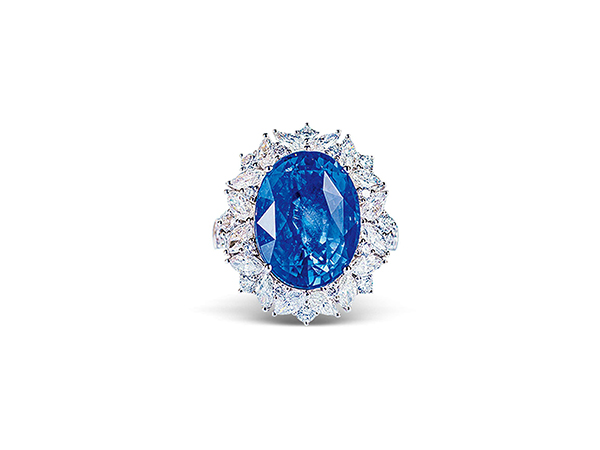
Hydrothermal type (altered ultrabasic rock type)
This type of deposit is represented by the Makarru sapphire deposit in the Ural region of Tanzania, Tanzania.
This type of deposit is altered in the ultrabasic rock mass. Mineralization is related to granite intrusion activities. Corundum gemstones (ruby and sapphire) are produced in veins composed of mica and plagioclase. The vein is produced in strongly altered serpentine and hornblende ultrabasic rocks.
There are also metamorphic rock types and magma types (basalt type).
Red sapphire under the same quality conditions, the higher the weight, the higher the price, especially the price of high quality red sapphire above 1 carat is more geometrical increments. The size and weight correspondence table of the common red sapphire facets lists the correspondence between the size and weight of the common red sapphire facets. The table gives a standard cut method for red sapphire weight estimation.
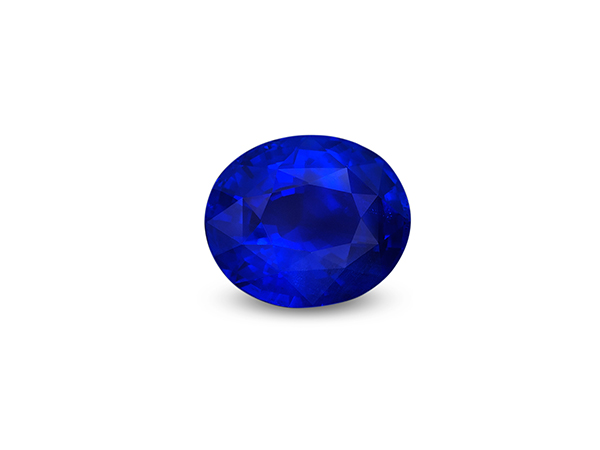
Starlight sapphire is due to the internal growth of a large number of tiny silk-like inclusions (rutile), and the reflection of the three groups of inclusions on the light, resulting in a polished gem-shaped gem top will show six stars and named . The starlight effect is produced by the inclusion of internal inclusions, but it also reduces the transparency of the gemstone, so starlight sapphire is usually translucent to transparent. The six-star line of high-quality star sapphire is completely transparent, with its intersection at the center of the gem and moving as the light turns. In September 2013, a 67.98-carat star sapphire was designed and polished in the past three months. Name it "Star of Purple Blue".
The gemstone is produced in Sri Lanka. The original stone weighs 162.5 carats. The polished gemstone weighs 67.98 carats. It is indigo in daylight, without flaws, full transparency, perfect star, flexible, clear and bright. Even more surprising is the “color-changing star sapphire”, which is blue under a white light source, purple under a yellow light source, and red under ultraviolet light. The use of ultraviolet light to identify color-changing gemstones is also a major discovery in gemstone research. Most of the color-changing gemstones, whether faced or curved, are red under the illumination of high-energy ultraviolet light. Because of the presence of chromium in the color-changing gemstones, The chrome ions are reflected inside the gemstone under the illumination of the high-energy light source, so the gemstone is red.
In addition to the beautiful blue, sapphire has a huge branch - colored sapphires. All corundum gems except red and blue are called colored sapphires. Because the color is too rich, people have entered the world of dreamy fairy tales. Therefore, Hong Kong people love to call them illusion sapphires.
Myanmar, Sri Lanka, Kenya, Nigeria, South Africa and other countries have a variety of colored sapphires. Due to the color of colored sapphires, it is increasingly popular among consumers in the international market, especially in Japan and Europe.
The most famous and precious of the colored sapphires is the powder orange sapphire produced in Sri Lanka - Padparadscha. Pink sapphire is one of the fastest growing gemstones in recent years. Orange sapphires also look very beautiful. Purple, green and yellow sapphires are not too low in color. Weak-colored sapphire with a gray, brown tone will reduce the beauty and value of the gem.
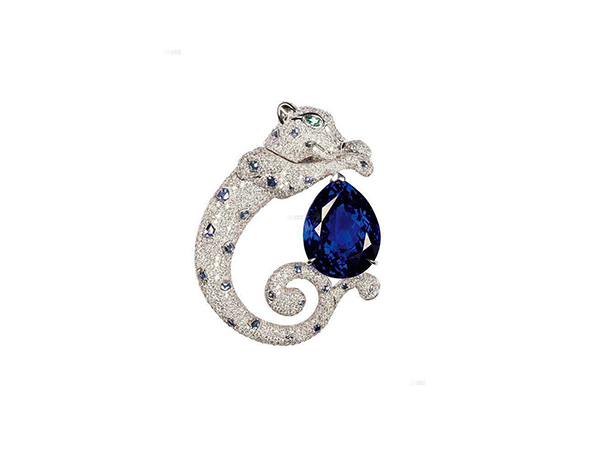
The biggest feature of sapphire is that the color is uneven, and the flat ribbons and growth lines with different depths can be seen in parallel hexagonal cylinders. Polycrystalline twin crystal development, common blinds double crystal grain. The cracking is split along the double crystal plane. In addition to the above common features, sapphire in different regions of the world has its own characteristics.
Sapphire and ruby are sister gems. They are all corundum minerals. They are the hardest natural minerals on earth except diamonds. The basic chemical composition is alumina. In addition to the star effect, only translucent or transparent and colorful corundum can be called a gem. Red and chrome-containing corundum is red, so it is called ruby. Blue sapphire (Sapphire) is due to the traces of titanium and iron. In fact, in addition to the red corundum gemstones, all other tones of corundum are commercially referred to as sapphire. Therefore, Sapphire is not just a blue corundum gem. In addition to the complete blue series, it also has yellow, pink, orange, orange and purple colors like fireworks. Sapphire is collectively referred to as Sapphire.
Place of origin
There are not many world sapphire producing areas, mainly Myanmar, Sri Lanka, Thailand, Australia, China, etc., but in terms of gem quality, Myanmar and Sri Lanka have the best quality. Depending on the geological origin, it can be divided into two categories: one is sapphire produced in Myanmar, Sri Lanka and Kashmir, India. The other category is sapphire from Australia, Thailand and China.
The sapphire of Myanmar and other real estates, which are colored by titanium, are bright blue, containing silky rutile and fingerprint-like liquid inclusions. The silky rutile inclusions can produce six or twelve starlights and are of high quality gemstones. The sapphire produced in Australia, Thailand and China contains more iron and is colored by iron.
Therefore, the color of the gemstone is very dark, and the reflection effect of the faceted gemstone is not very good.
Generally, it needs to be heated and processed to be used. The characteristics of sapphire from different regions are briefly described as follows:
Indian Kashmir sapphire. The color is blue in the cornflower, which is the indigo of the microstrip purple. The color has a large brightness and a bright color. The haze-like inclusion has a milky white reflective effect. Has always been hailed as the best in sapphire. The reason for this color sensation has not been conclusive. It may be caused by the fine particles such as rutile, or it may be caused by the scattering of light by some very small cracks and accompanying dissolved matter. The color is uneven and often forms. Clear blue and nearly colorless ribbons.
However, because the mining area is located at the northwestern end of the Himalayas, it is more than 5,000 meters above sea level. It is covered with fog all year round and has not been produced in recent years.
Myanmar Mogok Sapphire. In the same mining area as ruby, the other characteristics are identical except for the color. Its inclusion body is as follows: 绢 rutile rutile inclusions, parallel hexagonal cylinders arranged in a dense arrangement, 60 degrees, 120 degrees crossing. If the vertical silk-like inclusion is cut, it can be six-shot or twelve-shot star after honing into a curved gemstone; the bubble in the void of the fingerprint-like liquid inclusion occupies a small area, about 30%; solid package Body, corundum, spinel, uranium pyrochlore, apatite, etc.
Sri Lankan sapphire. Same as a ruby in a mining area, except for the different colors, the other characteristics are exactly the same. Its inclusions are as follows: 绢 filamentous inclusions, similar to the characteristics of Burmese sapphire, the difference is that the fibers are thin and long, can present six-shot starlight; liquid inclusions, in an amorphous layered cloth or fingerprint-like distribution; solid package Body, there are zircon, apatite, biotite and so on.
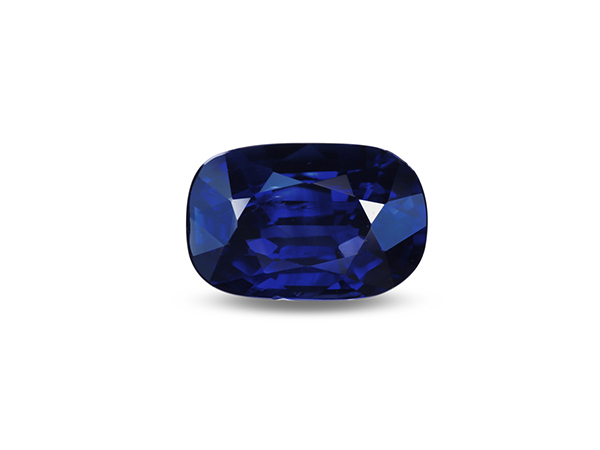
Thai sapphire. It has a black blue color and a light gray blue color. There are no filamentous inclusions in the crystal, but fingerprint-like liquid inclusions develop. The most characteristic is that there are cracks in the shape of a lotus leaf around the black solid inclusion body. The three groups of polycrystalline twin crystals developed, and the cracks split along the double crystal plane. Chinese sapphire. In the 1980s, many sapphire deposits were discovered in the basalts along the eastern coast of China. Among them, Shandong (Chang Le) sapphire has the best quality.
The crystal has a hexagonal barrel shape and a large particle size, generally above 1 cm, and the largest can reach several thousand carats. Due to its high iron content, sapphire is mostly indigo, blue, green and yellow near carbon black. Mainly indigo. There are very few inclusions in gem-quality sapphires. In addition to the black solid inclusions, fingerprint-like inclusions are still visible. There are no silky rutile and diffuse liquid inclusions.
The flat ribbon in sapphire is obvious, and the polycrystalline twin crystal is not developed. The outer edge of the large crystal can be seen as a growth line parallel to the hexagonal cylinder. Shandong sapphire is a high quality sapphire because of its internal defects.
Heilongjiang Province sapphire. The color is bright, transparent blue, light blue, gray blue, light green, rose red, etc., with or without inclusions, can be applied without color change. The downside is that the particles are small.
Sapphire produced in Hainan Island and Mingxi County, Fujian Province.
The characteristics are similar. Generally, crystals with a particle size of less than 5 mm are transparent and have few other defects except for a simple gas-liquid inclusion and a straight double crystal. However, the outer edges of the crystals with particles larger than 5 mm contain different layers of milky white, opaque, parallel hexagonal cylinders. Three sets of polycrystalline twin crystals of parallel rhombohedron in the crystal develop. There are more polygap and silkworm seed rutile inclusions in the crystal.
Jiangsu Province sapphire. The color is beautiful and transparent, mostly blue, light blue and green. However, when the surface is ejected, the volcanic eruption force is strong, so the sapphire crystal often splits along the axial plane and is thin, so it is difficult to take the material.
The sapphire produced in the Jinjin stalagmite mountain in Chongqing is similar to the Heilongjiang gem. The particles are medium in size with a high density of rubies.
Australian sapphire. Australia is a producer of abundant sapphire. However, due to the high content of iron, the color of the gemstone is dark. It is mostly dark blue, yellow, green or brown near carbon black. Contains dusty inclusions. Its gemstone characteristics are the same as those in Thailand and China, and all need to be changed before they can be used.

Sapphire symbolizes loyalty, steadfastness, love and honesty. Starlight sapphire is also known as the "stone of destiny", which can protect the wearer's safety and make people lucky. Sapphire is a high-end gemstone. It is one of the top five gemstones. It is ranked third after diamonds and rubies. Sapphire is the birthstone of September and autumn. It is known as the "sister gem" with rubies.
Sapphire is regarded as auspicious by the ancient people's mysterious supernatural color with its crystal clear and beautiful color. As early as in ancient Egypt, ancient Greece and ancient Rome, it was used to decorate mosques, churches and monasteries, and as a tribute to religious ceremonies. It has also become an indispensable accessory in the crown of the British Empire, the Crown of the Russian Tsar and the dress with diamonds and pearls. Since the gemstones entered the folklore in the past 100 years, sapphire has been among the world's top five precious stones, and is a jewel variety that people cherish.
The world of gemology defines sapphire as the birthstone of September. The Japanese chose it as a precious souvenir for the 23rd anniversary of marriage (sapphire) and the 26th anniversary (star sapphire).
Processing
Under high temperature treatment, the Australian Sapphire, which is too dark or dark blue, will become lighter. The white corundum in Sri Lanka is blue, and the light yellow can also be changed to a deeper and warmer yellow. In summary, there are 5 applications
A: weaken the blue of dark sapphire (under oxidizing conditions)
B: Deepen the blue color of sapphire (under reducing conditions)
C: removal of filamentous inclusions in sapphire and poorly developed starlight (cooling rapidly after heating)
D: Starlight is generated (slow cooling after heating)
E: The pale yellow, yellow-green corundum is heated under oxidizing conditions to turn into an orange-yellow-yellow sapphire.
Unfortunately, this manual approach is not easy to identify. However, high temperature treatment can make the gem become fragile and more likely to cause cracks inside the gem.
Many corundum on the surface are treated at high temperatures. Since this method is a natural process to replicate the gemstones, the gemstone color does not fade after the change, which is acceptable in the industry, but honest businessmen will declare to the customer.
High temperature treatment will make the crack more obvious, so the use of clear (less inclusions) but color difference gemstones for this manual treatment.
The sapphire mining area produced in Shandong (Changle) has been subjected to fading treatment. In the fading treatment, the raw materials are generally of good quality, darker color, and matured in fading technology. Part of the Shandong sapphire sold on the market is after fading treatment. This practice is acceptable in the industry, and honest businessmen must declare to customers.
Identification method
Sapphire is as expensive as ruby. If the color, clarity, and cutting are good, the price is very high. A small one often costs tens of thousands of yuan. But there are a lot of counterfeit sapphires on the market, so be cautious and buy a high-quality sapphire for a small amount of money, which is mostly deceived.
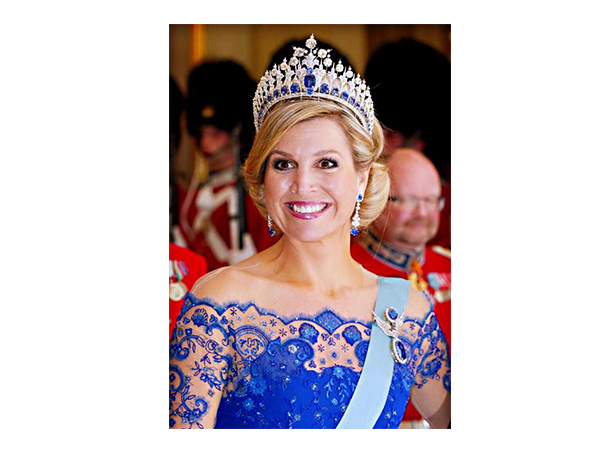
The most common is sapphire on the market. In fact, it is easier to identify glass. The glass is molded by pressing at a high temperature, and naturally shrinks after cooling, and the plane is recessed inward. This sag phenomenon is not easy to find with the naked eye. It must be magnified by a magnifying glass. When using a magnifying glass, it cannot be linearly focused. It should be obliquely focused, and it is easy to find concave, concave, usually glass.
The polishing of the gemstone usually achieves a very flat effect. Another method of identification is that there are many types of inclusions in the glass, the most common being bubbles, and the stones are free of bubbles. The bubbles in the glass can be found by observing with a magnifying glass of 10 times.
There is also a synthetic sapphire that acts as a sapphire. The identification method is to look at the texture first, whether the texture of the texture is naturally crystallized, and the natural crystallization is often messy and disordered, so it is usually genuine. The synthetic sapphire, the crystal is often very orderly.
Of course, many synthetic sapphires are clean and flawless, which is usually fake. Because natural gemstones are always somewhat foreign, there is almost no cleanliness. This synthetic sapphire is often glaring, radiant and superficial, without the deep sense of natural color. The natural gemstones are of high purity and are not glaring, and the brilliance is naturally emitted from the inside out.
Glass: usually dyed with cobalt (Cobalt) < or cobalt dark blue pigment, red under the color filter; different refractive index, single refractive.
Artificial spinel: Same as above.
Sandwich stone: the upper part is a real sapphire and the lower part is a fake. Place the stone in the water and carefully observe the different colors, luster and inclusions on the upper and lower sides of the waist.
Spinel: Single refraction with different refractive indices.
Tanzanian Stone (Tanzanite): Physical properties are different.
The world's largest cutting sapphire - "Oriental Blue Giant", this sapphire is rectangular, from Kashmir, weighing 486.52 carats, is a rare treasure in the world of jewelry.
Identify blue tourmaline and aquamarine
There are many ways to identify two kinds of gems. The most direct way is to observe the gems you want to buy, judging from the color and inclusions. Generally, the color of the blue tourmaline gemstone is darker and darker, while the aquamarine color is light blue, and the aquamarine color is generally lighter. The blue color is the sea water color or light sky blue in the shallow water, and some aquamarine color is partial. The green is light blue-green.
Secondly, the inclusion of gemstones can also help you identify two gemstones. The contents of tourmaline gemstones are often liquid or flat thin-layer void inclusions, while aquamarine inclusions are often rain-like inclusions. Generally, the sapphire with good quality is difficult to see the inclusions, and it can be seen with the aid of a magnifying glass.
Of course, it is also possible to distinguish blue tourmaline and sea sapphire from other aspects, tourmaline has pleochroism, and aquamarine also has pleochroism. The difference between the hardness is not obvious. The density of tourmaline is greater than that of aquamarine. Therefore, the same size and size of the gemstone, the blue tourmaline is higher than the aquamarine.
Identify blue natural gemstones similar to sapphires
Blue natural gemstones similar to sapphire include blue spinel quartz clock, blue tourmaline, Tanzania stone (dragon stone), blue zircon (color change), blue cone, kyanite, cordierite. Similar synthetic gemstones include synthetic sapphires, synthetic spinels and glass. Sapphire has unique distinctive features: uneven color, visible parallel ribbons in parallel; filament-like inclusions, diffuse liquid inclusions and lotus-like inclusions: strong dichroism. The natural blue gemstones similar to this are as follows:
Spinel: Blue spinel is uniform in color with a slight grayish hue. Homogeneous, no dichroism. There are more gas-liquid inclusions and octahedral small spinel inclusions in the crystal.
Blue tourmaline: mostly greenish blue with more cracks and empty tubular gas-liquid inclusions. The birefringence is large, and double shadows are visible at the facets of the bottom facets. The dichroism is extremely obvious.
Blue cone mine: The only place in the world is the California state of the United States. The yield is small and the particle size is small. The blue cone mine is blue to purple. The refractive index and density are similar to those of sapphire, and they also have strong dichroism. However, it has a large birefringence (0.04) and a strong dispersion (0.044). Therefore, the bright appearance of strong dispersion and birefringence double shadow and bright blue fluorescence in short-wave ultraviolet light can be distinguished from sapphire.
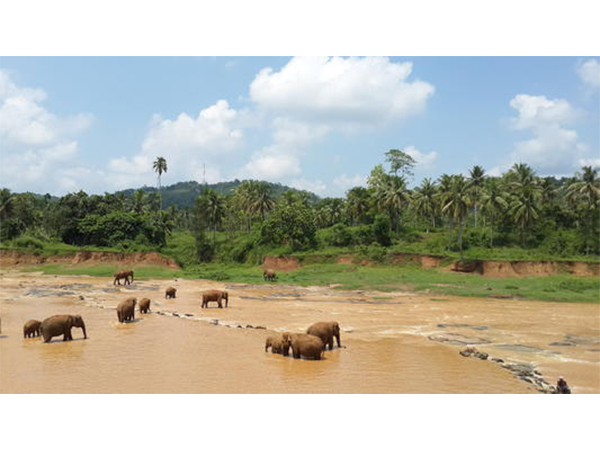
Tanzanite (Dianshishi): It is a gem-grade zoisite found in Tanzania, referred to as tanzanite. It is one of the world's most popular gemstone varieties. The zoisite is reddish-brown, deep purple, transparent, large in size, and heat treated to become an indigo-like sapphire. Uneven color, obvious trichromatic: dark blue, purple red, yellow green. The density is 3.35g/cm 2 and the hardness is 6.5-7, which is different from sapphire.
The blue color of the zoisite is 0.02-2% vanadium-induced coloration, so there is no iron absorption line in the absorption spectrum.
